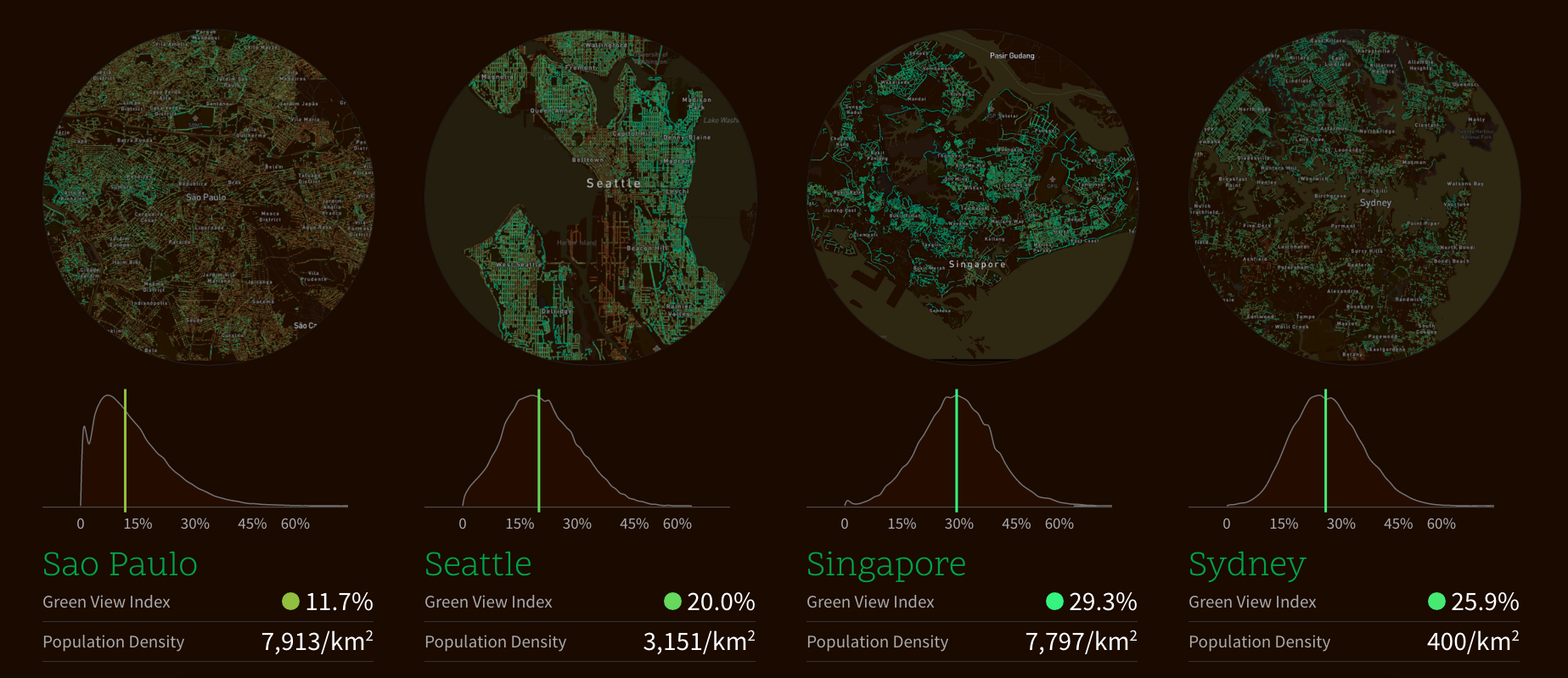
Researchers at MIT, in collaboration with the World Economic Forum, launch TREEPEDIA, a new platform that uses Google Street View data to measure and compare the green canopy in cities around the world.
Researchers at the Massachusetts Institute of Technology Senseable City Lab have developed an interactive website that uses Google Street View data to measure the urban "Green Canopy," or the aboveground portion of trees and vegetation in cities around the world. Treepedia will allow city dwellers to view the location and size of trees within their communities and to submit input to help tag, track, and advocate for more such trees in their cities. Treepedia was developed in partnership with the World Economic Forum's Global Agenda Council on the Future of Cities and its Global Shapers Community.
The green canopy is an important and integral part of urban life. Trees help mitigate extreme temperatures; provide a natural respite from traffic noise, and congestion; and improve the quality of life for those living in urban environments. However, the average citizen is often removed from understanding the individual features of their unique environmental habitats. How, then, can citizens be better engaged in this process so that they can play a more integral role in helping to shape the green canopies in their neighborhoods?

from top left): Carlo Ratti—Director; Newsha Ghaeli—Project Lead;
Ian Seiferling—Analytics & Environment; Xiaojiang Li—Green View
Index Development; and Wonyoung So—Web, Visualization.
In order to address these questions, the MIT Senseable City Lab has developed an innovative metric utilizing Google Street View (GSV) panoramas, called the "Green View Index"—by which cities can evaluate and compare green canopy coverage. The Green View Index enables scientists and city dwellers to monitor the urban tree coverage—and take action to improve it. They can play a more active role in addressing concerns about the adverse effects of climate change, and to campaign on behalf of the landscapes they dwell in.
“As many cities experience warming temperatures, increased storm frequency, and continued air pollution, the well-being of our urban trees has never been more important. We present here an index by which to compare cities against one another, encouraging local authorities and communities to take action to protect and promote the green canopy cover,” says Carlo Ratti, Director of the Senseable City Lab.
Initially, Treepedia launches in 10 global cities including Geneva, Tel-Aviv, and Boston and will continue to expand in more municipalities across the globe. Users can immediately perceive which areas are green and not green in a city, investigate the amount of green coverage at a given point, and compare their city to different cities around the world. In the future, users will also have the possibility to add unique tree information on an open-source street map and engage with city officials in order to request that new trees be planted in certain areas.

“The future of cities cannot be one of unsustainable expansion; it should rather be one of tireless innovation. In this context, Treepedia builds on the work undertaken by the World Economic Forum’s Global Agenda Council on the Future of Cities and, in particular, the 'Adopt a Tree through Your Social Network' innovation in the Top 10 Urban Innovations report, to leverage technology to enable citizens to explore the green canopy of their city. We hope that this endeavor will give citizens a greater appreciation of their city’s green canopy and appreciate that the green canopy can assist in responding to climate change,” says Alice Charles, Council Manager, Global Agenda Council on the Future of Cities, World Economic Forum. ![]()
ABOUT THE MIT SENSEABLE CITY LAB:
Started in 2005, the Senseable City Lab at the Massachusetts Institute of Technology is a multidisciplinary research group that studies the interface between cities, people, and technologies. It investigates how the ubiquity of digital devices and the various telecommunication networks that augment our cities are impacting urban living. With an overall goal of anticipating future trends, the Lab bring together researchers from many academic disciplines to work on groundbreaking ideas and innovate real-world demonstrations. This research is undertaken in partnership with cities, the private sector, and other universities; through this collaborative approach, we strive to reveal how a new, rapidly expanding network of digital devices is serving to modify the traditional principles of understanding, describing, and inhabiting cities.

